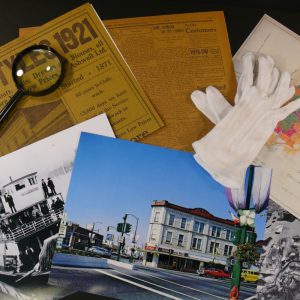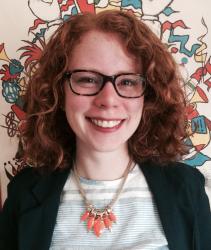“[The students] loved that the museum came to them,” commented a teacher who recently rented our newest local history kit, Community of Villages, which contains primary source reproductions from our archives. “Being in my class, instead of in the museum, they felt more freedom to ask questions and to interact with the materials provided.”
Over the past year we’ve been working on creating our local history kits in collaboration with the Chilliwack School District. These kits compliment our traditional 1-1.5 hr school programs as they expand on specific local history topics and allow teachers and students the freedom to explore the materials at their own pace.

Some of the reproductions in the Community of Villages kit.
With the new BC Curriculum in full swing this year, these kits focus on helping both teachers and students learn curricular competencies while exploring local topics. The Community of Villages kit specifically focuses on exploring the concept of “Continuity and Change” and helps students learn how to explain why some aspects of their communities have changed over time while others have stayed the same.
Learning with the primary sources in their hands provides a concrete real connection to the past for the students. Each kit comes with specific lesson plans and activity suggestions for a variety of grades, but sometimes all you need is a few simple prompts to get students talking and exploring on their own. Here are a few hints for learning with primary sources from our Community of Villages kit:
- Sequencing – Have students work together to sequence a series of photographs from oldest to newest. This will get them talking about the quality of the photographs, the clothes people are wearing, the different modes of transportation and so on.
- Compare and Contrast – Using photographs or newspaper articles, have students compare one from the past and one contemporary example. Have them chart the differences and similarities they can find.
- Maps – Have students compare a current map of Chilliwack with an historic one. Questions come naturally about the changes in the city over time.
- Location Mapping – Have students match historic photos to a current map or vice versa. Get them to locate their home or school on the map to see how their area has changed or stayed the same over time.
In many cases, I’ve found that the primary sources speak for themselves and that student’s curiosity is sparked and questions come naturally when they get to interact with the materials first hand.
If you have any questions or suggestions about learning with primary sources, feel free to get in touch with me at stephanie@chilliwackmuseum.ca!


Comments are closed.